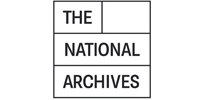
The Scribe as Artist
Initials and other Decorative Elements in the Deeds of the Guild of St Anne

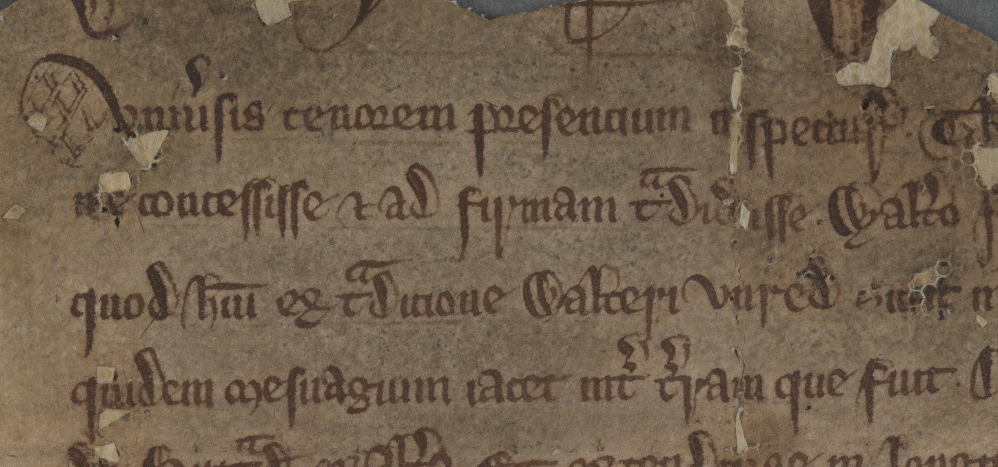
Indenture from the Deeds of the Guild of St Anne, 21 Edward I, Item 13 (29 September 1293) - Decoration in the early centuries of the Guild of St Anne's deeds was minimal, but a few scribes created small decorative elements with their initial letters. This scribe has created a field of diamonds within an enlarged approach stroke to his initial V.
View this item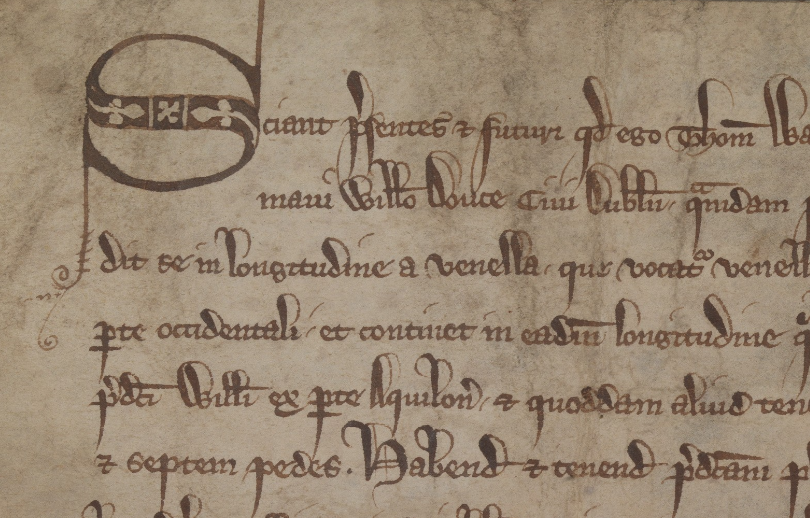
Grant from the Deeds of the Guild of St Anne, 33 Edward I, Item 23 (3 May 1305) - This early fourteenth century scribe has decorated the horizontal bar across the center of his Lombardic initial S with a negative design of elongated trefoils flanking a quatrefoil.
View this item
Power of Attorney from the Deeds of the Guild of St Anne, 8 Edward III, Item 14 (18 January 1335) - A scribal self-portrait? This fourteenth-century scribe created inhabited initials with the face and hood of a tonsured cleric or monk with strabismus. The approach stroke of his V ends in a small foliate design. A a small foliate design sits to the left of the initial.
View this item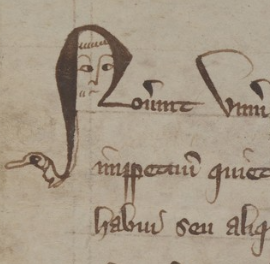
Quitclaim from the Deeds of the Guild of St Anne, 9 Edward III, Item 16 (18 February 1335) - An inhabited N by the same scribe as GSA/5/14. Here, the hood surrounds the face, forming the body of the N. The initial stroke of the N ends in a small foliate decoration.
View this item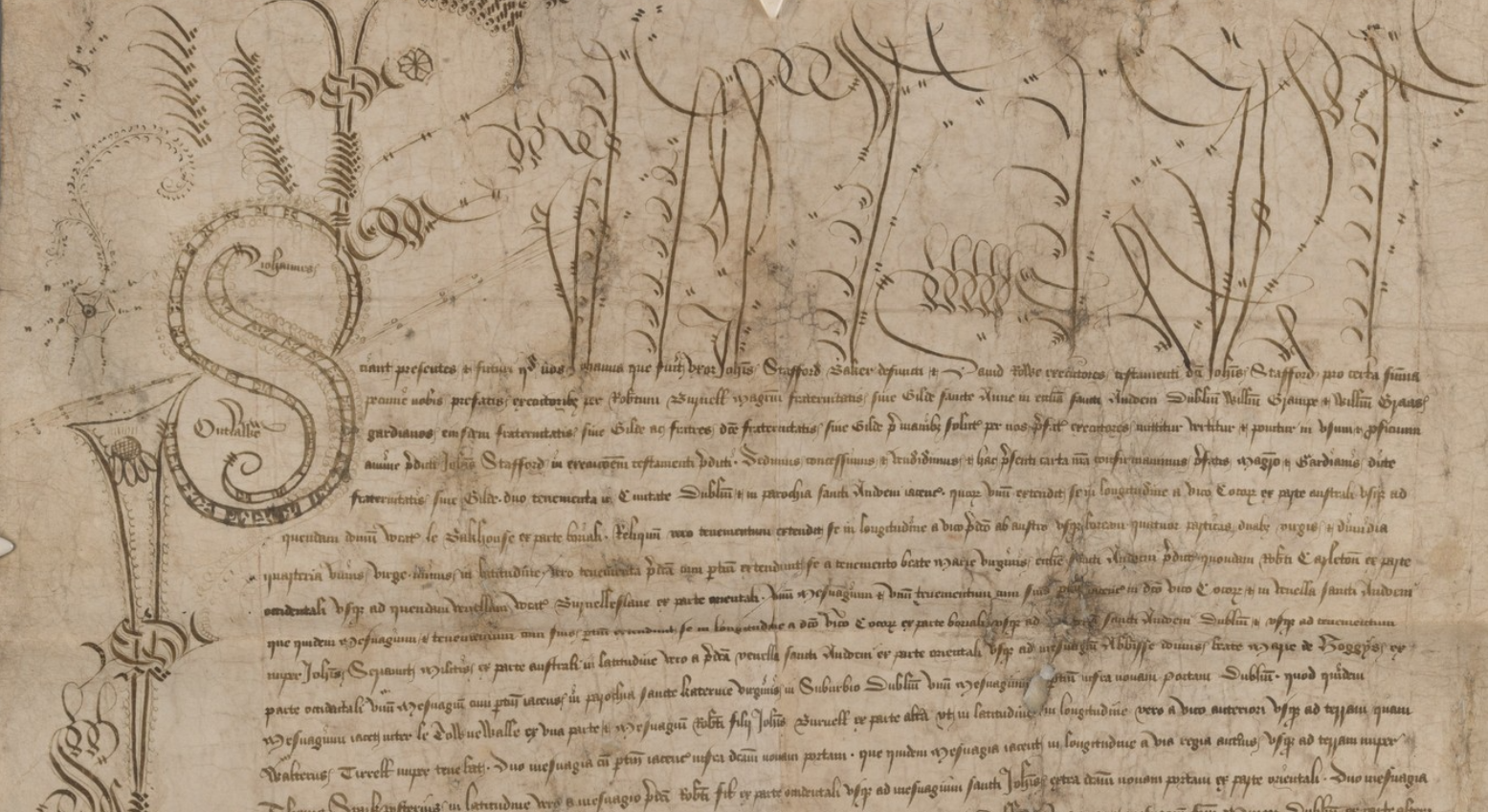
Grant from the Deeds of the Guild of St Anne, 28 Henry VI, Item 79 (4 March 1450)- Scribe Johannes Outlawe labored to make not only an important quitclaim granting the Guild several parcels of land, but also a work of art. The quitclaim begins with an elaborate S outlined with bars of quatrefoils or crosses drawn in reserve. The left margin of the page is decorated with fernlike foliate sprays and panels of interlace with scalloped and dotted infills. Floral decoration includes two wild roses and a fully opened coneflower. Exuberant pen flourishes extend the ascenders of the first line of writing. These include extra loops, ticks, and interlace. Johannes Outlawe's name is written in the top and bottom voids of the S. The style is reminiscent of manuscript decoration, but is executed in the same brown ink as the rest of the deed.
View this item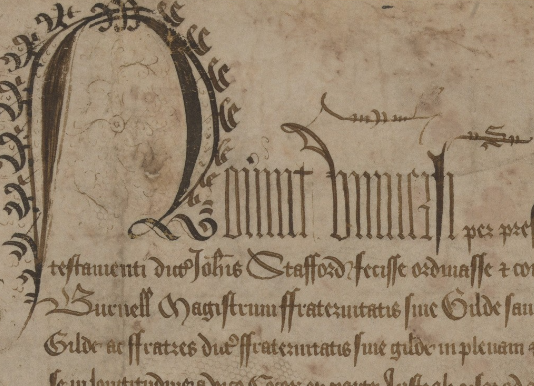
Power of Attorney from the Deeds of the Guild of St Anne, 28 Henry VI, Item 81 (4 March 1450) - Scribe Johannes Outlawe decorates this power of attorney with a large N which he has embellished with loops and dots. The N has an open rose in the center, and the initial stroke ends in light, curled, foliate sprays. The ascenders of the first line are extended and feature extra loops and ticks. The scribe plays with letters and decoration; the ascenders of the s in 'universi' and the S in 'Stafford' also contain decorative S figures. Both voids in the S of 'Stafford' contain the letter S as well.
View this item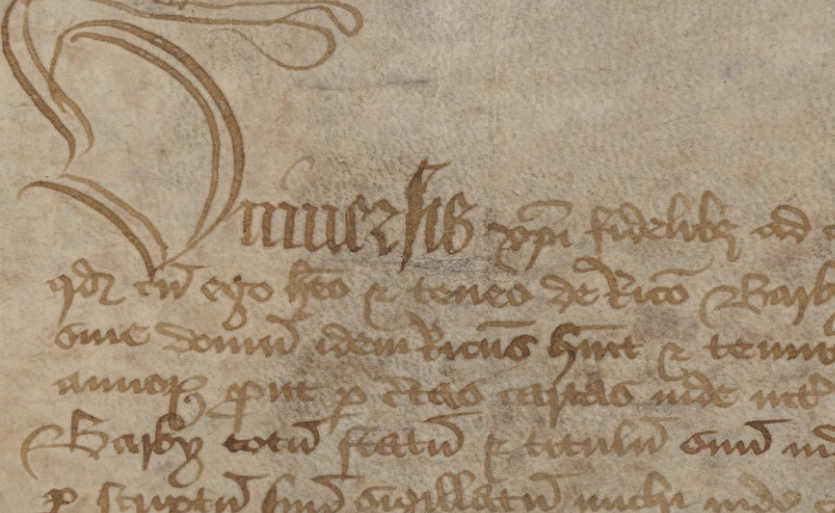
Grant from the Deeds of the Guild of St Anne, 2 Henry VI, Item 8 (7 May 1487) - This is a more restrained, flourished inital U drawn with fine, parallel lines. The lower left corner of the U extends into a graceful curve, and an additional pair of parallel strokes decorate the area above the letter. This more minimalist style is typical of the more utilitarian decorative styles of 15th century scribes.
View this item
Deed of Assignment from the Deeds of the Guild of St Anne, 3 Henry VI, Item 9 (24 November 1487) - This is a finely decorated capital O. The interior of the O is divided into three parts by elongated Z-shaped horizonal lines, and the voids are decorated with fine tick marks and clusters of three dots.
View this item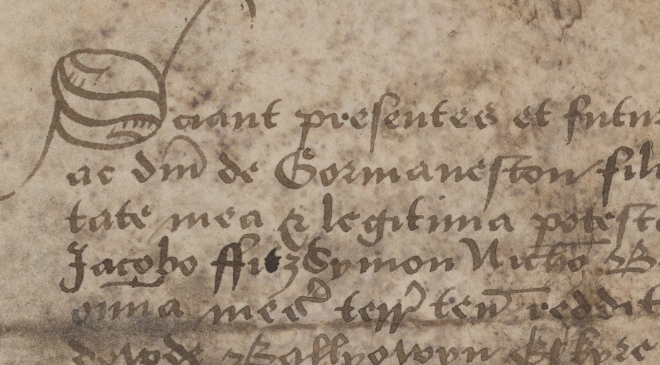
Grant from the Deeds of the Guild of St Anne, 25 Henry VIII, Item 39 (9 February 1534) - Here is another initial S, decorated minimally with an undecorated central band and simple hatched boxes echoing the curve of the central band in the upper and lower voids of the letter. The S is extended into the upper and left margins with long, hairline pen flourishes.
View this item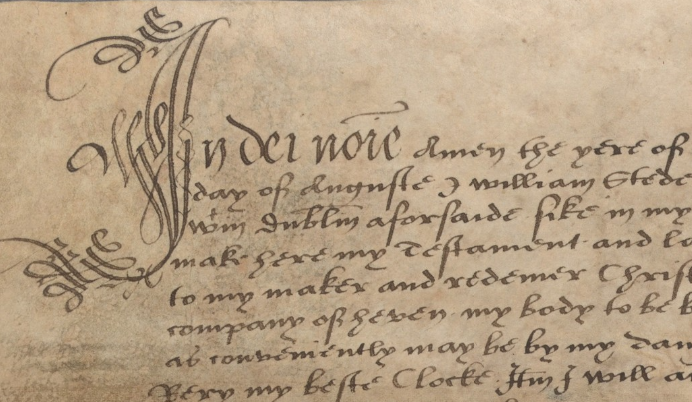
Will from the Deeds of the Guild of St Anne, 26 Henry VIII, Item 41 (9 August 1534) - This will opens with a large, flourished capital I that extends the full height of the upper margin. Its penwork decoration is a web of interlacing, loops, and hairline flourishes typical of early Tudor cadel-style letter decoration, emphasizing geometric designs and precise penwork.
View this item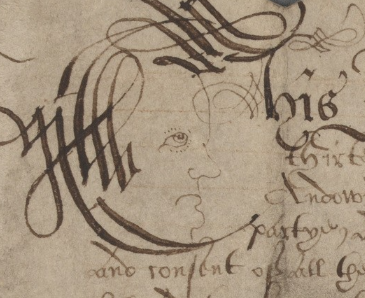
Feefarme from the Deeds of the Guild of St Anne, 35 Elizabeth I, Item 30 (8 November 1593) - This cadel-style T takes up the entire upper corner of the document. The T itself is made of interlacing lines with thick downstrokes and hairline loops. The bowl is inhabited by a lightly-drawn profile of a man's face with a prominent nose and chin.
View this item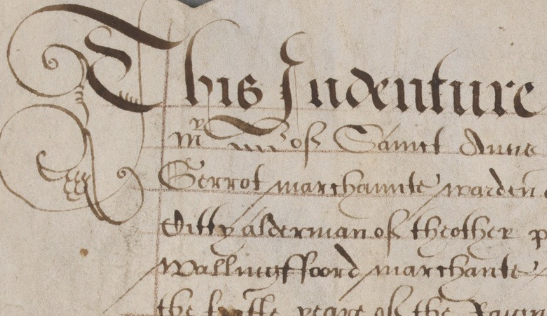
Lease from the Deeds of the Guild of St Anne, 40 Elizabeth I, Item 44 (4 April 1598) - This T is smaller than some of the more elaborate initials on earlier documents. The letter itself is formed from three curving lines, and the crossbar of the T extends into two foliate or bud-like motifs.
View this item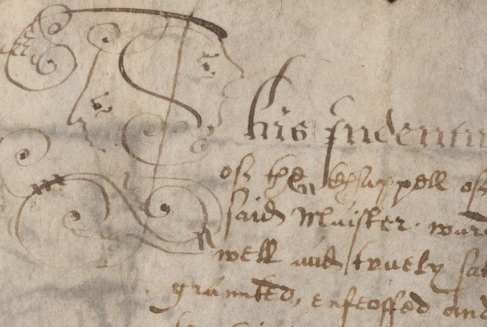
Grant from the Deeds of the Guild of St Anne, 19 James I, Item 17 (10 April 1621) - This T is drawn with broad strokes and embellished with hairline spirals and foliate or bud-like motifs. Two faces in profile are drawn in light lines on either side of the stem of the T.
View this item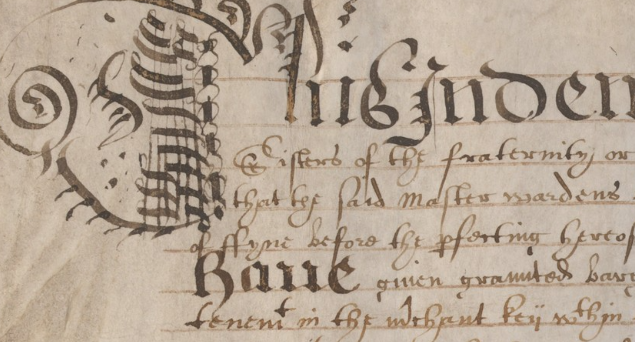
Feefarme from the Deeds of the Guild of St Anne, 20 James I, Item 24 (26 May 1622) - This elaborate T is an example of the late cadel-style of letter decoration. The stem is built of alternating bars and loops, from which extends a gridwork of broad horizontal lines ending in hairline loops and fine vertical lines. The crossbar and base stroke of the T have fernlike decoration, and the crossbar ends on the left with a large spiral.
View this item
Lease from the Deeds of the Guild of St Anne, 15 Charles I, Item 20 (23 May 1639) - This is a very fine example of the opening words to a document executed by a scribe who was active in the Guild during the reigns of James I and Charles I. The bow and crossbar of this T are decorated with nets of parallel broad and narrow penstrokes. The ends of the crossbar end in spirals, and curved decorative strokes and dots create the impression of leaves and vines. The leaf and tendril decoration continues through the first words of the document, written in a Gothic book hand display script before the scribe reverts to a mixed secretary-italic documentary script.
View this item






